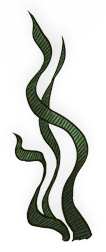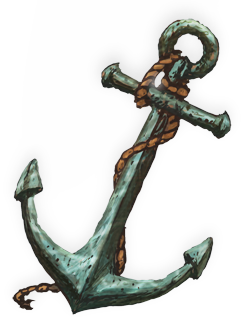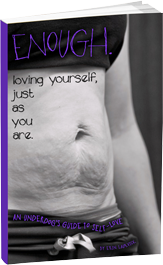For those of you that follow, you’ll know all about this.
The Body Image Project
goal
Through this Project, you will construct a deeper level of comfort with and acceptance of your body. When executed as intended, the Project will help you to develop a relationship with your body that is positive, welcoming, peaceful, and harmonious.
procedure
To participate in The Body Image Project, take photos of your body every day, according to the schedule below. Once you have taken your daily picture, look at it. REALLY LOOK. Think about the part of your body you’ve photographed, then sit in meditation or write out answers to the questions that follow.
Day 1 – hands
Day 2 – arms
Day 3 – shoulders
Day 4 – back (neck to hips, without clothes)
Day 5 – knees
Day 6 – ankles
Day 7 – feet
Day 8 – toes and toenails
Day 9 – eyes
Day 10 – chin
Day 11 – front of neck, décolletage
Day 12 – hair
Day 13 – calves
Day 14 – eyebrows and lashes
Day 15 – hips
Day 16 – lips
Day 17 – thighs
Day 18 – nose
Day 19 – fingers and fingernails
Day 20 – profile view of body, naked or with snug clothing
Day 21 – legs (as a whole)
Day 22 – skin, scars, moles, birthmarks
Day 23 – breasts
Day 24 – back of neck, hairline
Day 25 – butt
Day 26 – stretch marks
Day 27 – stomach (standing)
Day 28 – stomach (sitting)
Day 29 – face
Day 30 – body as a whole
I have arranged the challenge according to the average woman’s fears and insecurities. Some of these images will be easy for you to take. Some will be downright hard. The pictures will get harder as you go along.
Take the pictures anyways.
When we avoid those things that make us anxious and uncomfortable, we reinforce our fear of those things. Avoidance prevents us from adapting. Avoidance keeps us from change. Avoidance spreads and grows, and soon we find that we aren’t just avoiding one part of our body, but ALL of it. Then the clothes we wear, then the people who see us in those clothes.
“The only way out of fear is through.” PUSH HARD. Take the pictures. Keep them for yourself at the very least. Share them if you can, even if only with your sister or a trusted friend. Share them with your spouse.
Find your power. Find your sexy. Find your beauty.
It’s there, you just have to be willing to see it.
You have to be willing to look.
photograph notes and best practices
When I first started taking pictures of my body, I did it in secret. I’d put the kids to bed, make myself a cup of tea, and disappear into my bedroom with a tripod and my camera. Once I shut that door, I did not come out until the deed was done. I felt …shy. Not really ashamed, but timid. Nervous. Like I was doing something I wasn’t supposed to do.
Feeling like that is normal.
We have avoided ourselves for so long, to jump in with eyes wide open is a shock to our system. When you participate in this Project, you are quite literally carving new mental paths. It will feel weird.
Just. Keep. Going.
To get the most out of your photo sessions, here are a few tips:
1. As much as possible, keep it simple. The simpler and faster this is, the more likely you’ll keep going. You can pick up your cell phone right now and snap a photo of your hand in less than three seconds. It does not require a lot of planning or thought.
2. Don’t overthink, just act. Like jumping off a high dive, the longer you stand there and think about it, the more time your body has to respond to the fear. Take a deep breath and push the button. Take a deep breath and look at the picture you took.
3. For the really scary pictures, take a bit more time and dress the part. Put on makeup or fancy underpants. Have a glass of wine. Just as it is with an intimate, sexual encounter, foreplay helps.
4. If you feel like a derp, just go with it. Push into it. To explain, I’ll just leave this here.

(I was trying to take a picture of my face but I felt ridiculous. I went with it.)
5. Try a few different poses and camera angles for each body part. THIS IS HUGE. The first picture I took of my chin almost killed me, I was laughing so hard. For the second picture I stretched my neck up and changed the camera angle, and my chin looked completely different.
6. When you look at the picture and hate it, don’t delete it. Sit with it for a bit. Our gut reaction is one of avoidance and fear. Fight or flight. DON’T RUN. Don’t quit. To overcome the feelings you have you must sit in them and wait. THEY WILL SUBSIDE. I PROMISE. Just keep going. Keep looking.
7. If you’ve looked 100 times and the picture still makes you feel (objectively) bad, repeat step 5. As a photographer I’ve learned that angle, lighting, and perspective make a HUGE DIFFERENCE. I have taken workshops and hours of education on “how to pose,” because posing makes all the difference in the world. Sometimes it’s not the subject of the picture that’s the problem, it’s the picture itself. Positioning. Sharp light.
8. Maintain perspective. Keep in mind that what your camera sees is real and true, but it represents only 1/1,000,000,000,000 of the split-second images you produce in a day as you live and breathe and move about in your world. When I stand in front of a camera for DMV, gym membership, school ID, and library card photos, I look like a derp every. single. time. I do not take a great full-front picture. Not because I’m ugly or disgusting, but because I’m …well, a derp. Like Chandler on Friends, I don’t photograph well.
body image questions
As you answer these questions, you will note that they are directed at the photo of the body part, not at the body part itself. This is an important distinction. We have spent so much time living in our skin, hating it from the inside, we need to form a sense of detachment and objectivity. Using the pictures themselves to answer the questions will help with this process.
Answer each of these questions for each body part, mentally or in writing. (I suggest writing, because it will make the biggest dent! Action cures fear.)
- When you looked at the photos of this body part, what were you afraid you’d see?
- Once you looked at it again, repeatedly, and longer, once the voice of fear quieted down, how did you actually feel about what you saw? How was the voice of fear wrong?
- Imagine that this picture was of your daughter, sister, friend. Would you think the same things that you do about yourself and your body about someone else, if the image was of them? Why not?
- Name five positive aesthetic things about this body part.
- In a functional sense, how does this body part serve you? How does it make you better, stronger, faster, more capable?
- Imagine that this body part is a living thing (it is), doing a functional job (it does). Has this body part actually failed you? Are you alive and breathing, regardless of how well or poorly this body part functions?
- Imagine life without this part of yourself. Not “same part but different,” but without this part entirely. How would your life be different if your body was missing this part?
- How does this body part make you unique?
- Every part of you tells a story. From the top of your head to the tips of your toes, each body part tells a story about you, your life, your experiences, where you’ve been, and where you want to go.Tell the story of this body part. Tell the story of how you grew to dislike it, or how you’ve learned to love it. Tell the story of the first time someone pointed and laughed, or asked questions, or admired. Tell of its shame, its glory, its fall and redemption. How does this body part contribute to making you who you are?
- Finally, from this day forward, how will you honor and serve this part of your body? How will you respect and love it? Make a plan to appreciate this body part, and take action to do so.
Love yourself. Dig Deep. Find your worth, and own your greatness.
Change your mind, and change your whole life.
===============================
For more information on The Body Image Project, Depth, or what kind of cookies are my favorite, feel free to email me at erin@erinlaurvick.com.
Push on, Soldier. Push on.












Comments ( 0 )